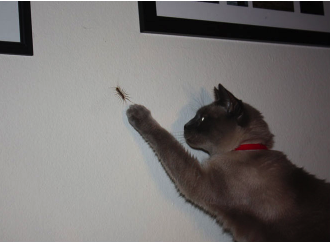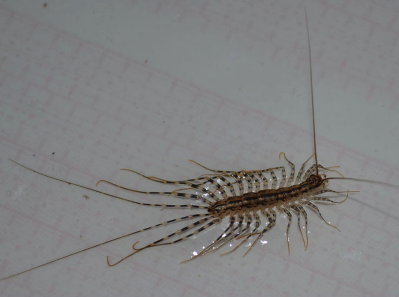Most of us don’t think twice when a bug scuttles across the floor—we grab the nearest object and squash it without hesitation.
Insects seem dirty, bothersome, and sometimes even dangerous. But what if one of the creepiest little visitors in your home—the lightning-fast, many-legged centipede—was quietly working in your favor? What if killing it meant losing one of your most effective, unsung pest-control allies?

When a centipede darts across a bathroom tile or disappears into a dark corner, the immediate reaction is usually fear or disgust. With dozens of legs and lightning-quick movements, it’s enough to make anyone jump. But before you reach for a shoe or tissue, consider this: these tiny predators are quietly protecting your home from far worse pests.
House centipedes, unlike their larger and more intimidating relatives, are small, fragile, and harmless to humans. Their 15–20 pairs of legs give them a frightening appearance, but their role in your household is purely beneficial. They hunt down cockroaches, spiders, silverfish, termites, bedbugs, and ants—essentially acting as natural exterminators. A single centipede can eliminate dozens of pests that you would otherwise have to deal with yourself.

That doesn’t mean you should welcome hordes of them indoors. But if you spot the occasional centipede, it’s worth reconsidering the instinct to kill. You can gently escort it outside or simply let it roam. Unlike some spiders, which can multiply rapidly when crushed, centipedes pose no such risk. And despite their eerie look, they aren’t carriers of harmful bacteria and won’t contaminate your food.
Meanwhile, there are plenty of insects worth avoiding. Bullet ants deliver excruciating stings, botflies burrow under skin causing infections, and fleas spread quickly, leaving itchy bites that can become infected.
Kissing bugs transmit deadly parasites, giant Japanese hornets can be fatal, and tsetse flies carry sleeping sickness. Swarms of aggressive bees, driver ants with crushing mandibles, and the ever-deadly mosquito—responsible for nearly a million deaths worldwide each year—represent far more danger than a house centipede ever could.

Compared to these real threats, the humble house centipede is more ally than adversary.
🔹 Conclusion
Next time you see a centipede racing across a wall or hiding in a bathroom corner, pause before reaching for the nearest weapon. Despite its creepy appearance, this tiny predator is quietly defending your home from far more harmful insects. While some bugs carry disease, inflict pain, or even kill, the harmless house centipede is a natural ally. Letting it live might just be the smartest, most unexpected pest-control choice you make.
